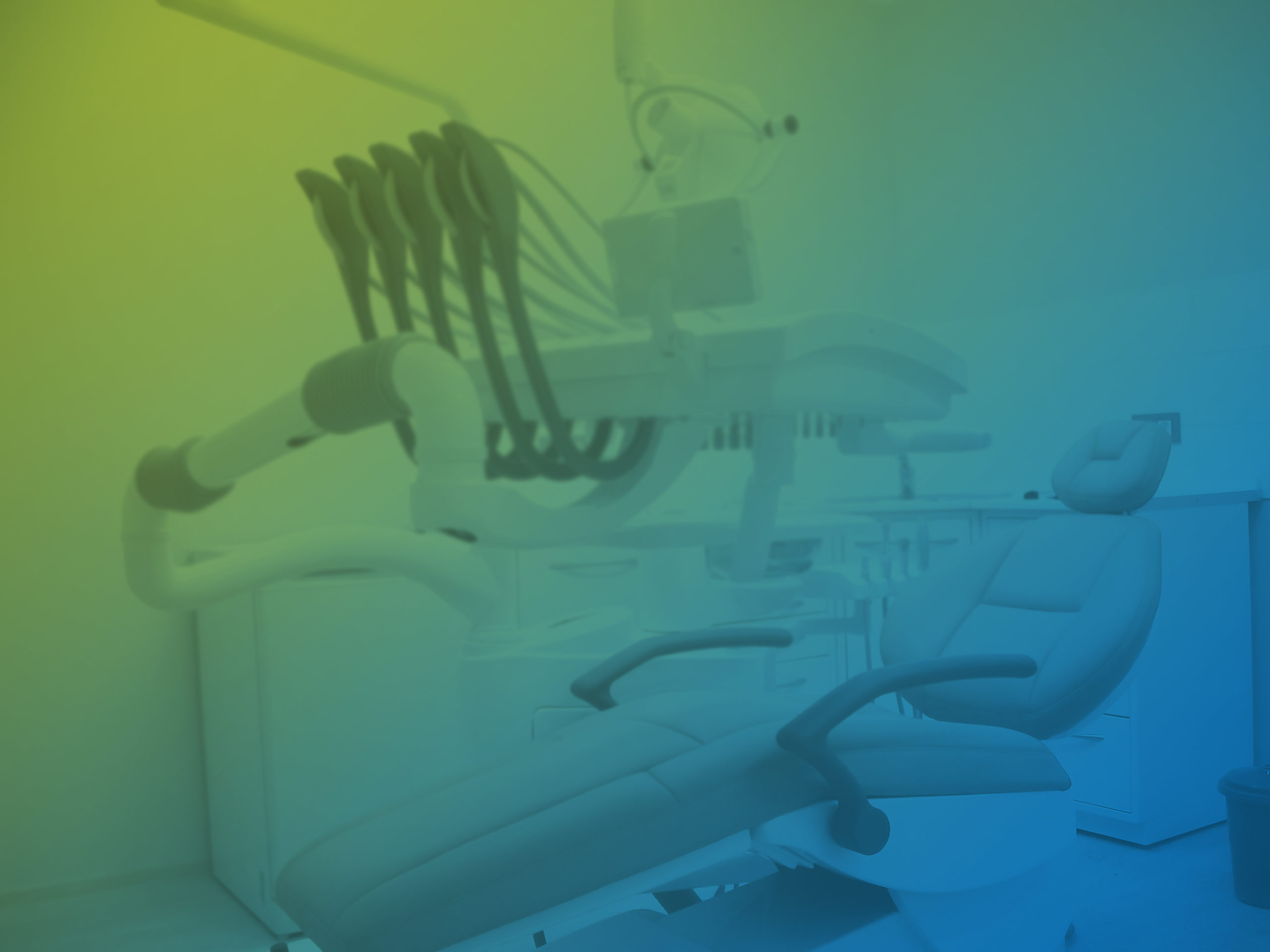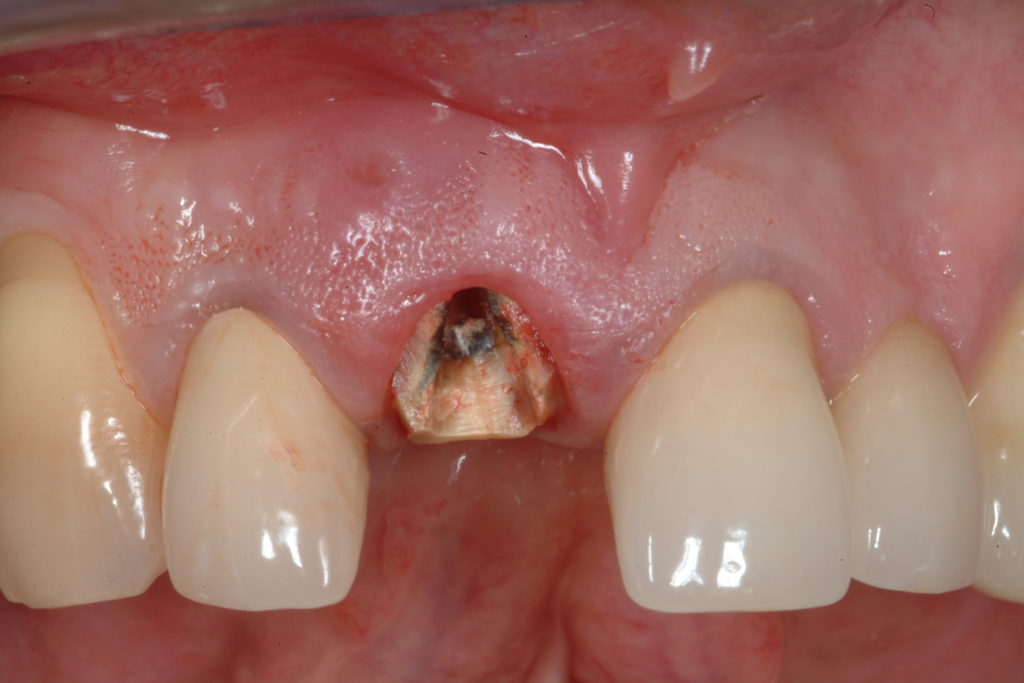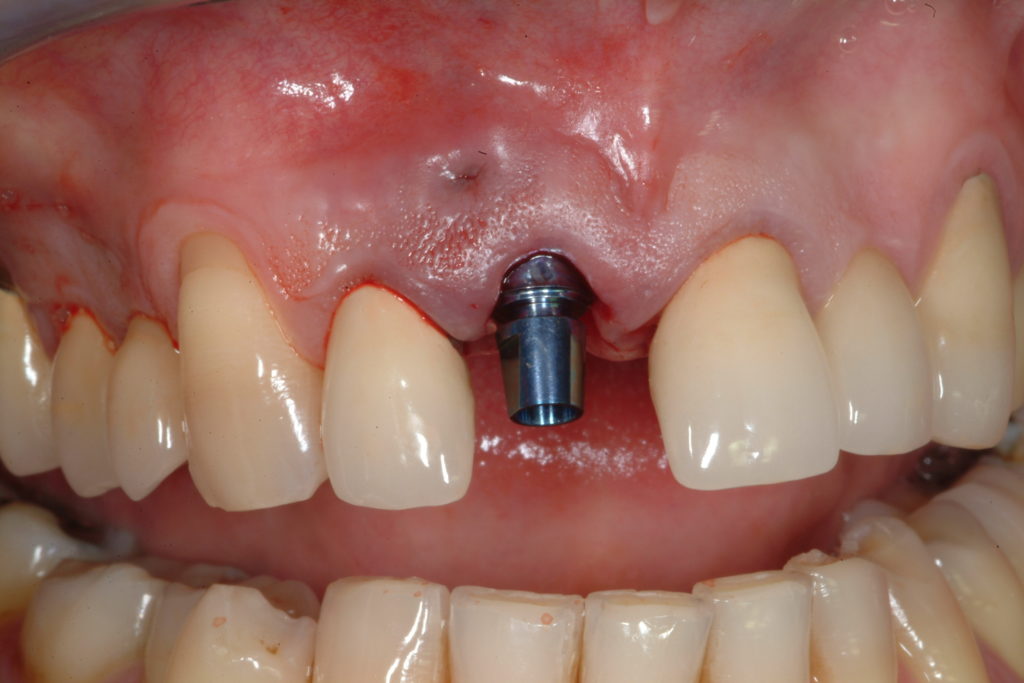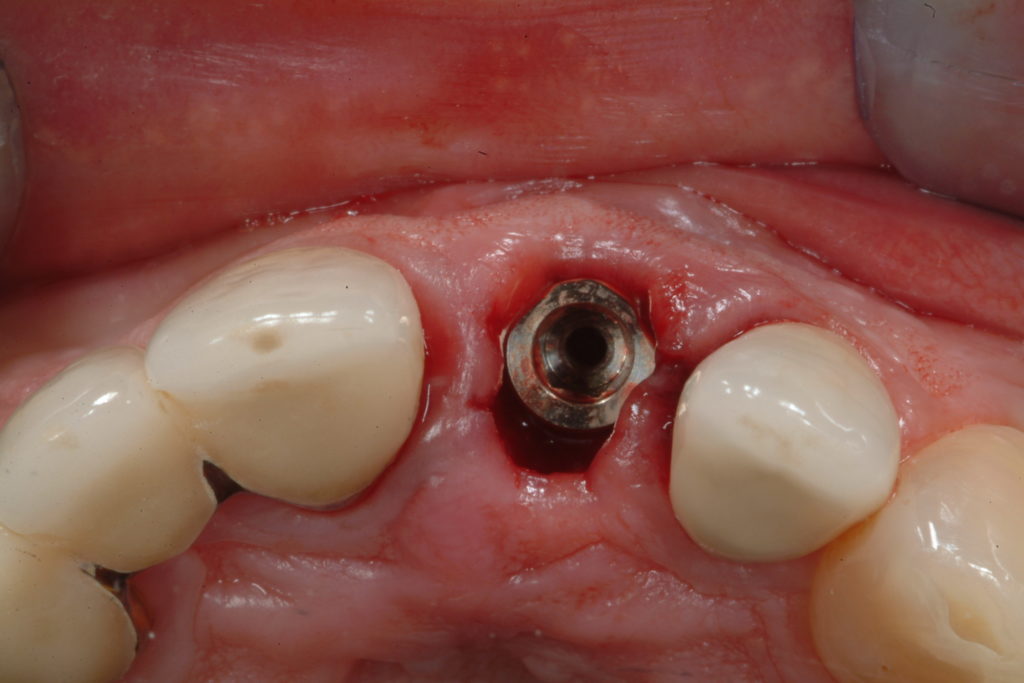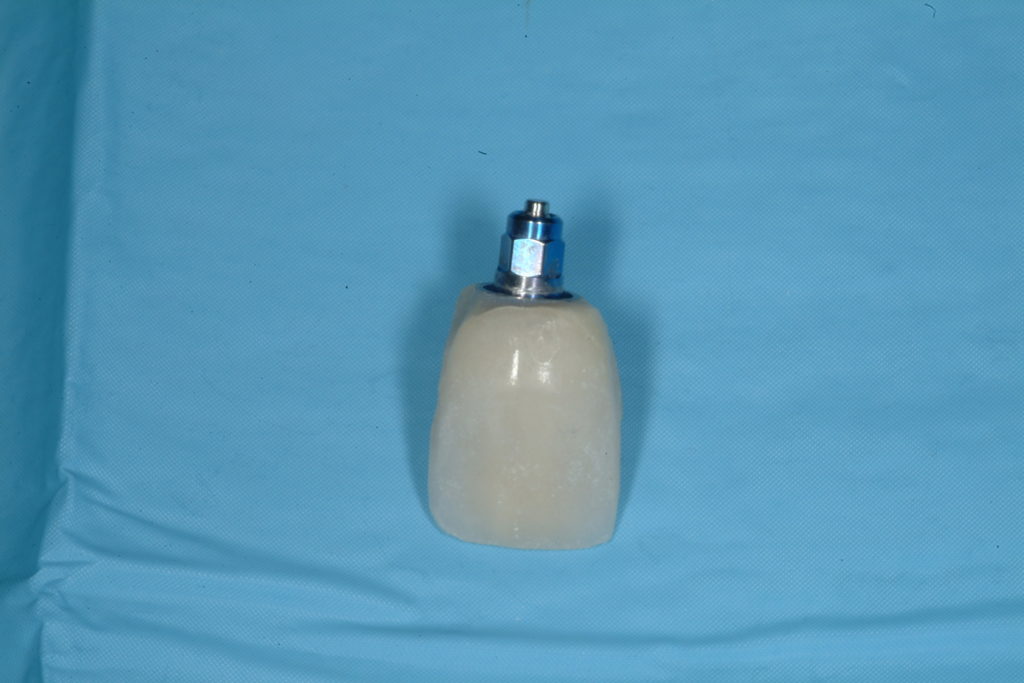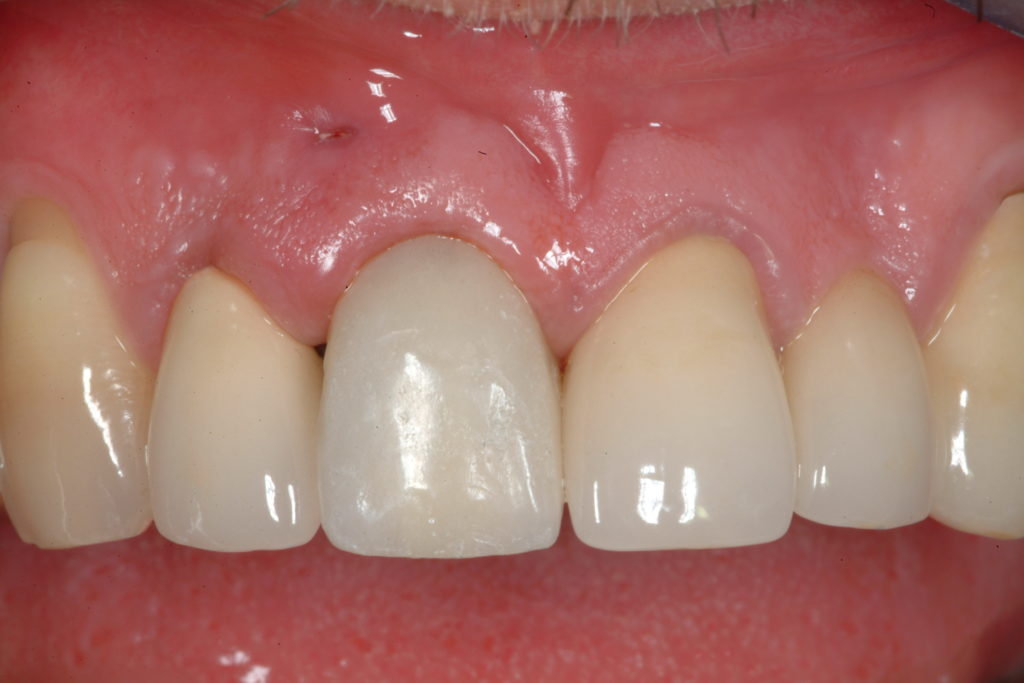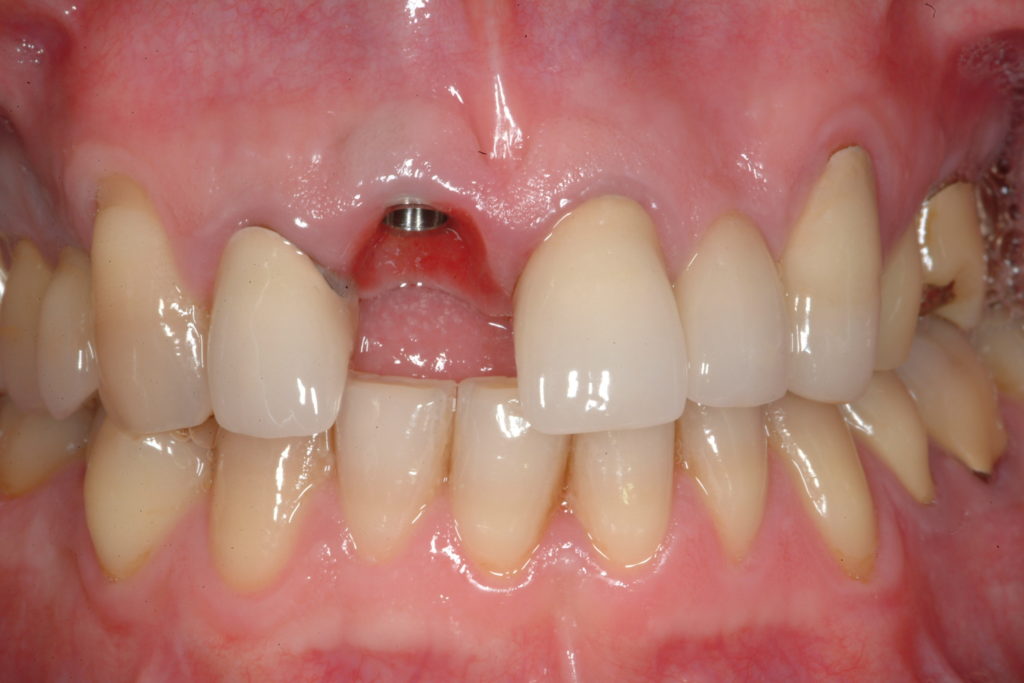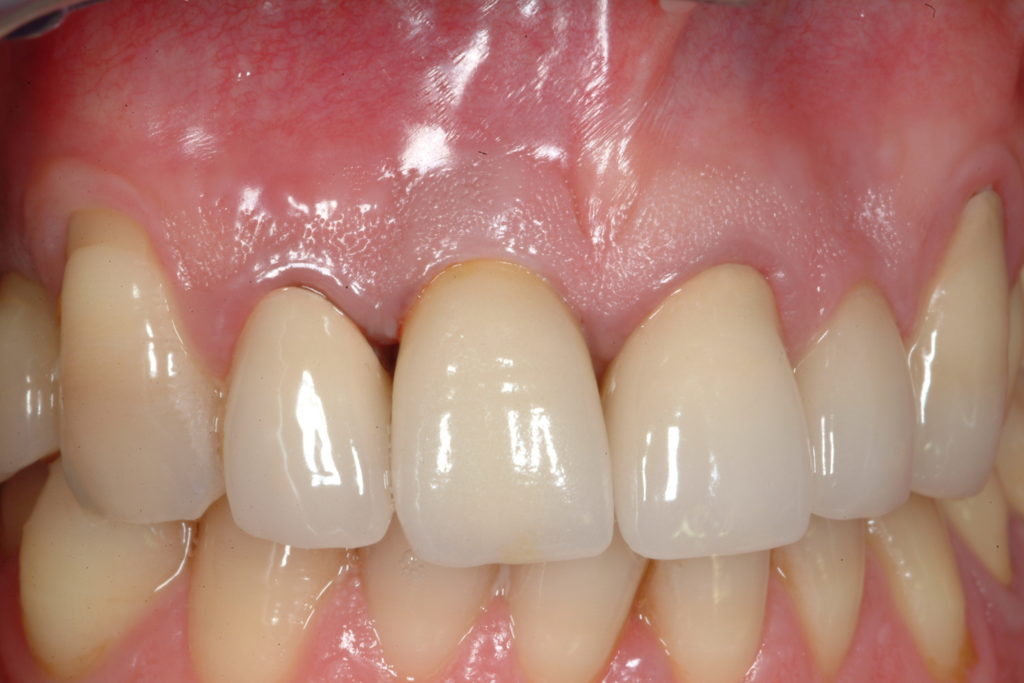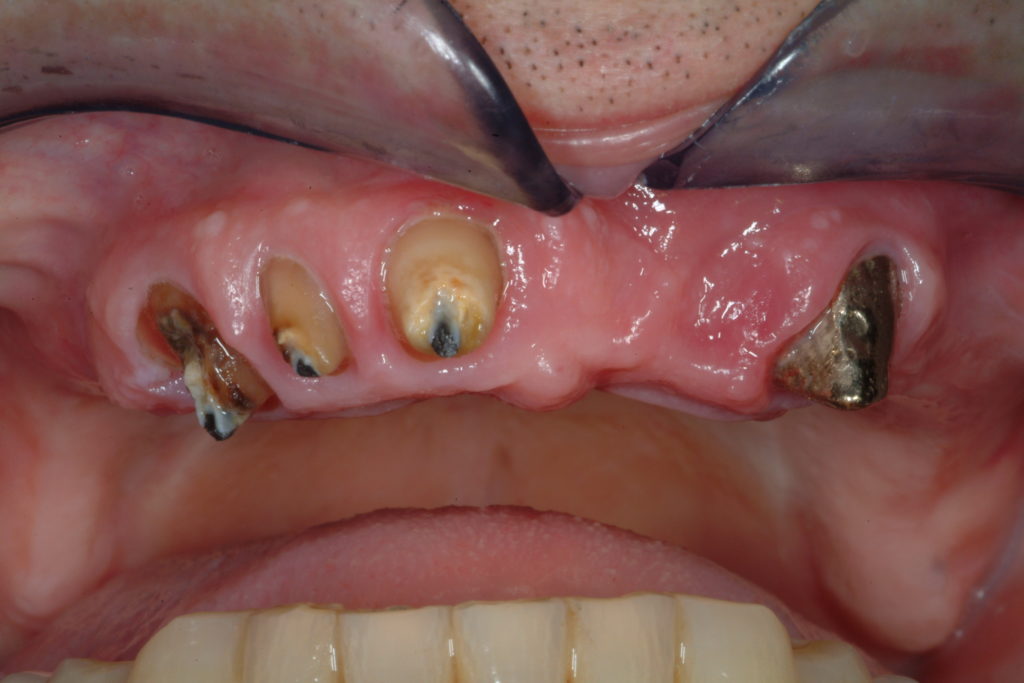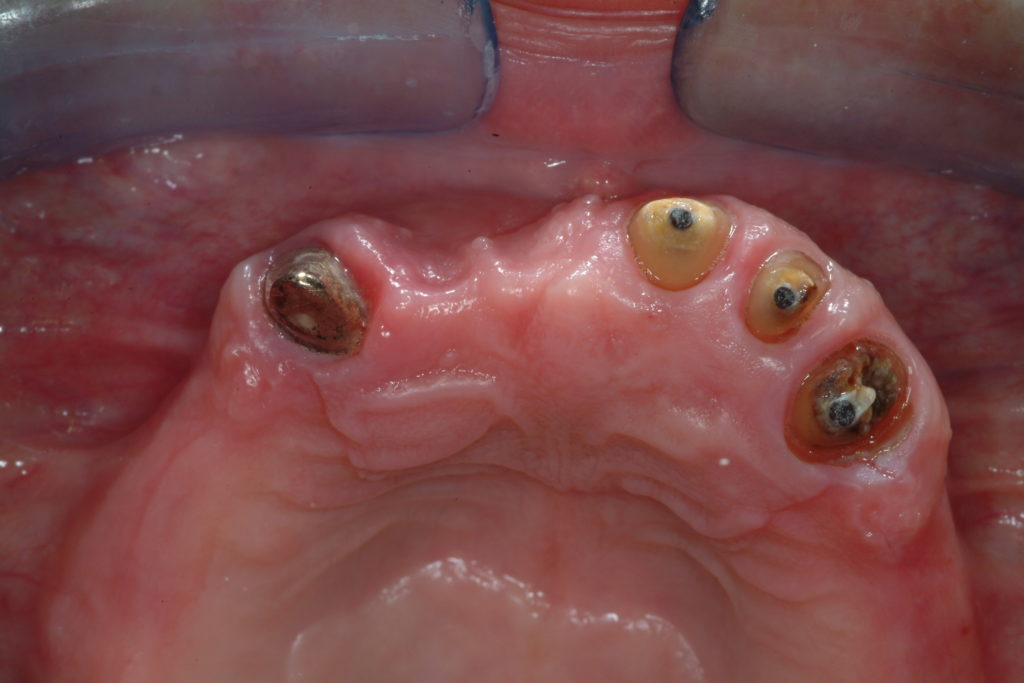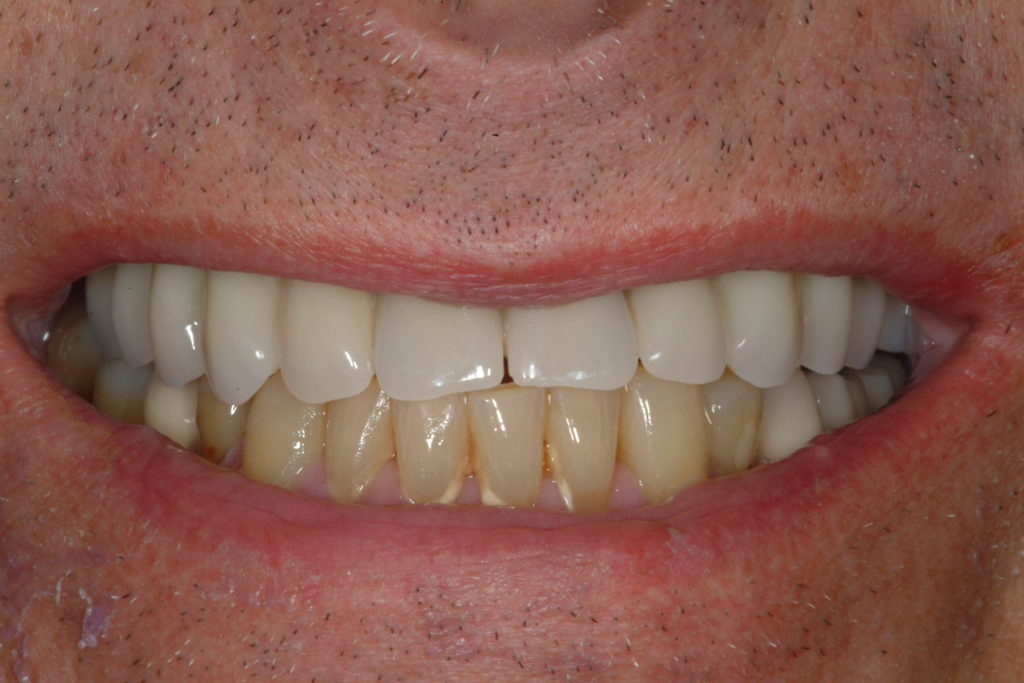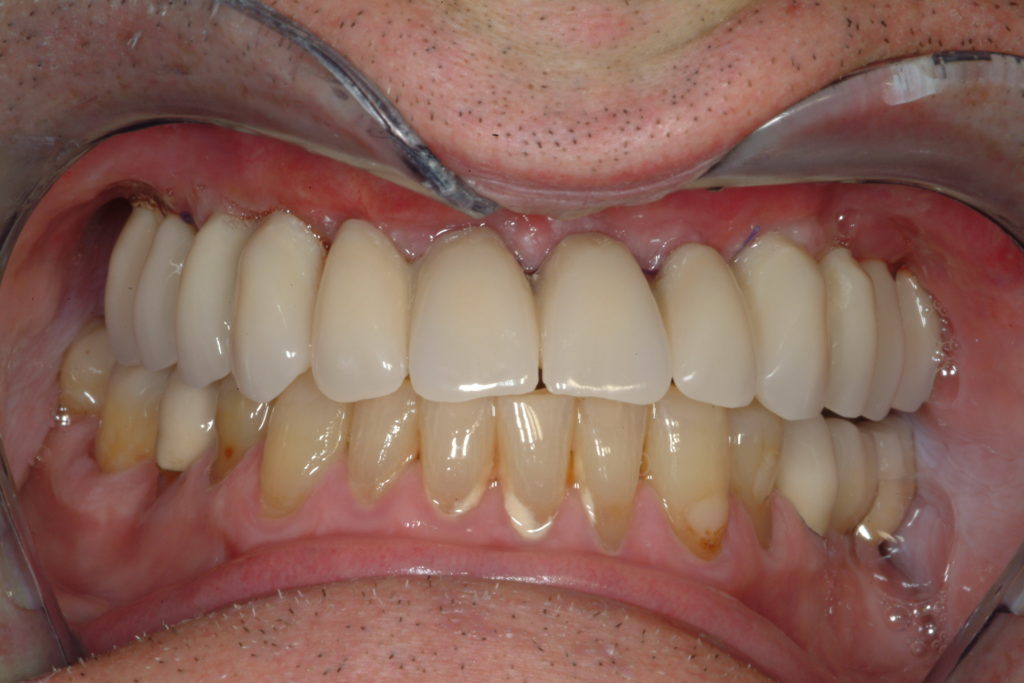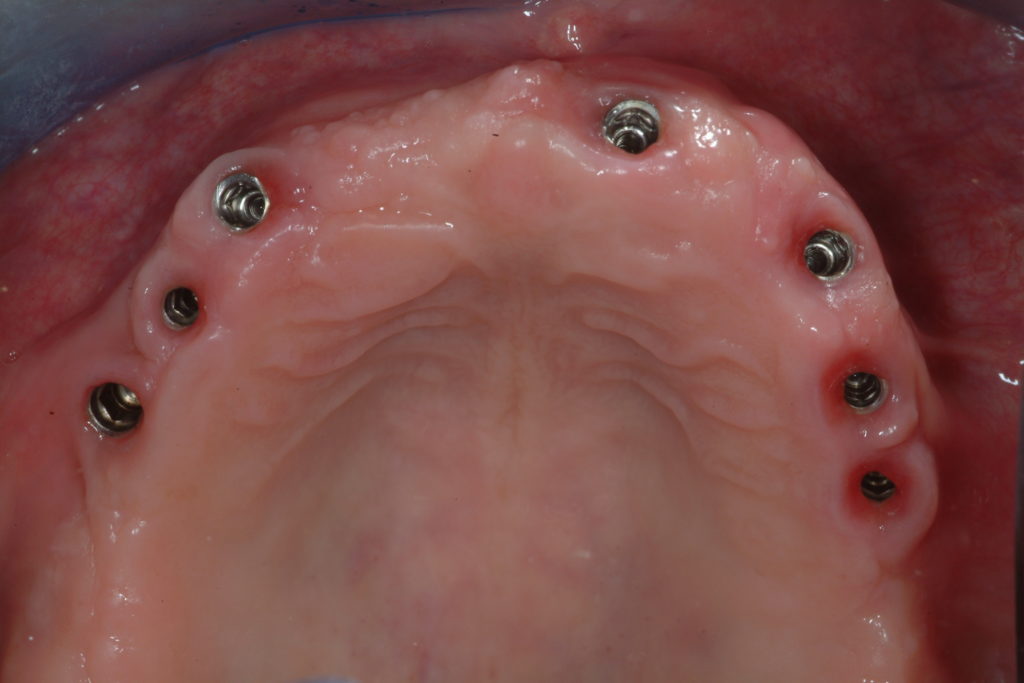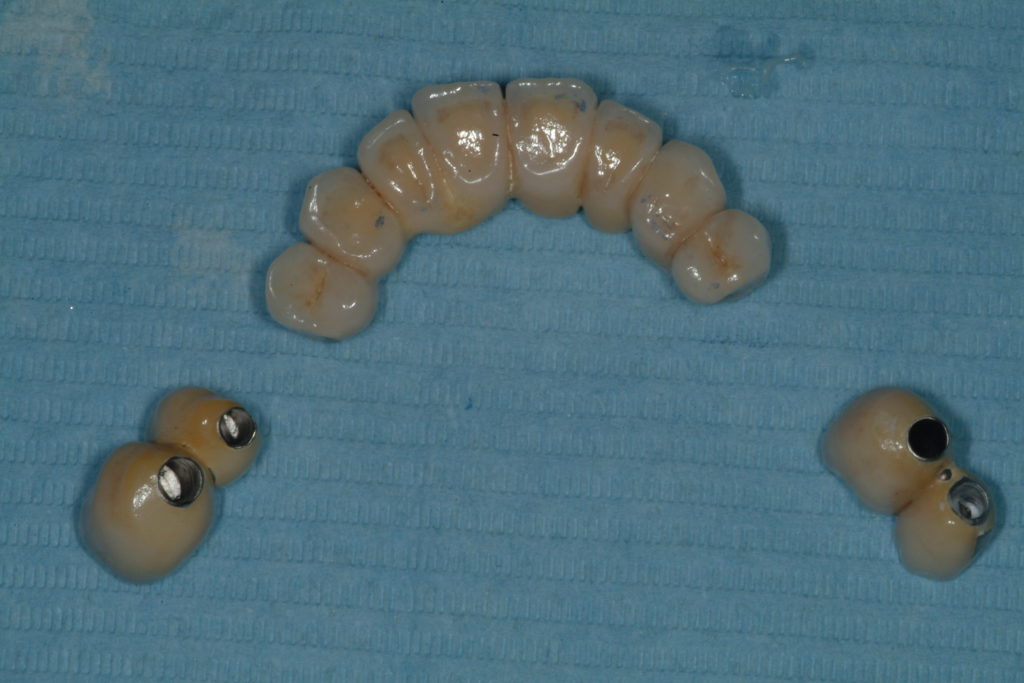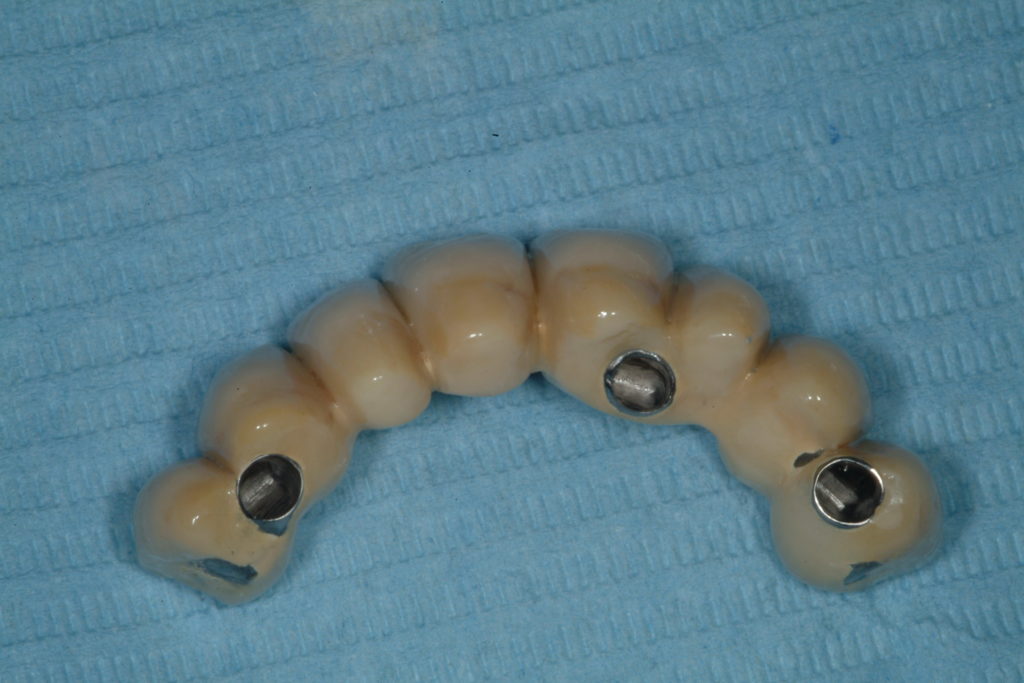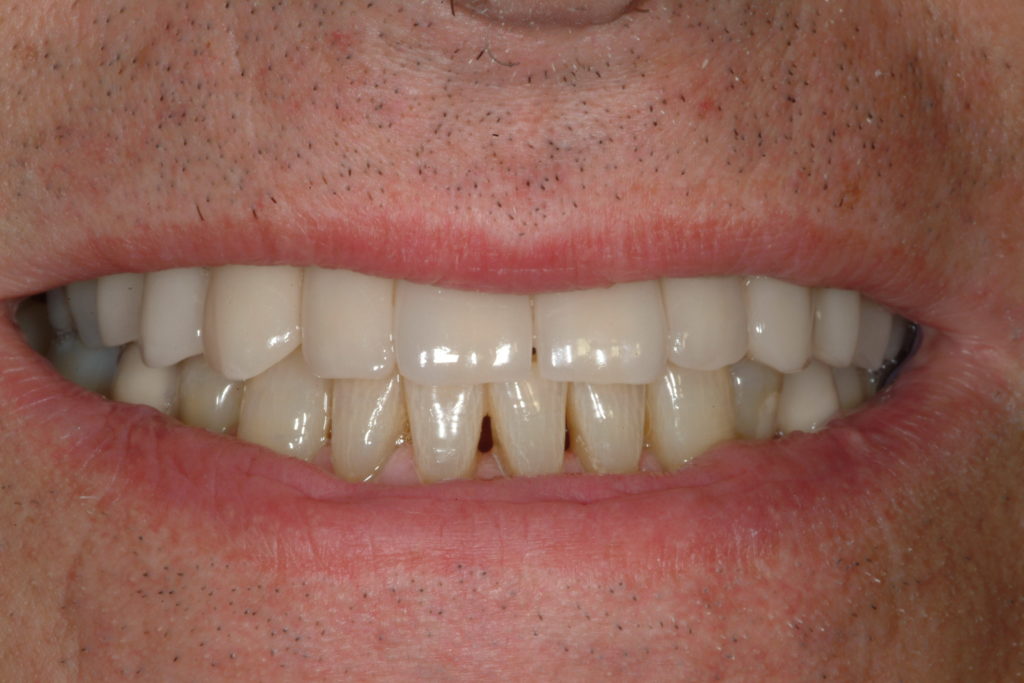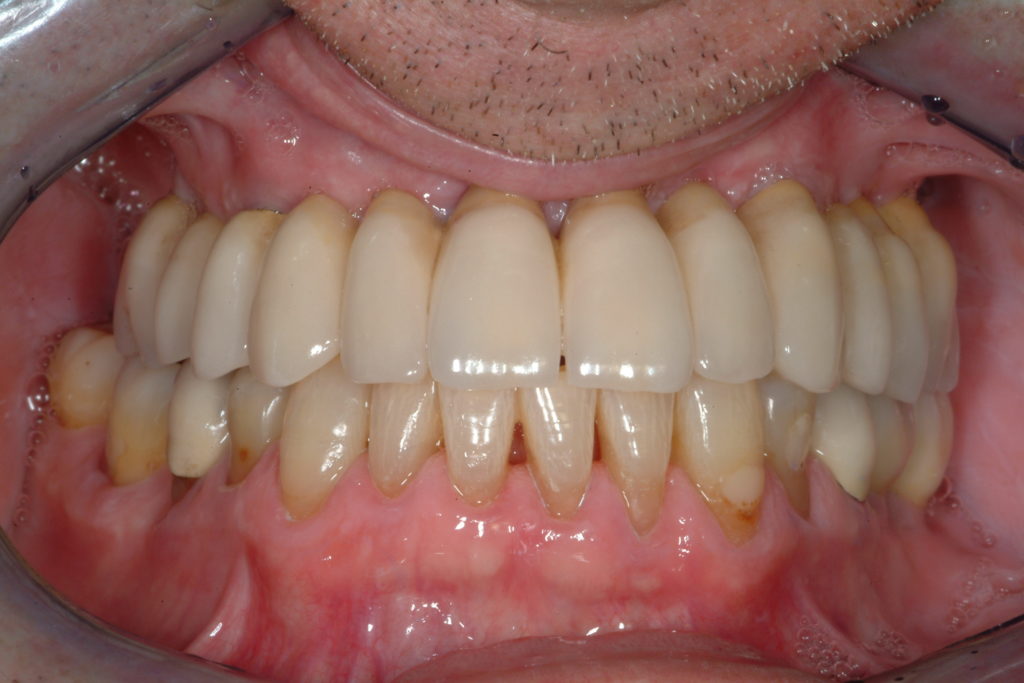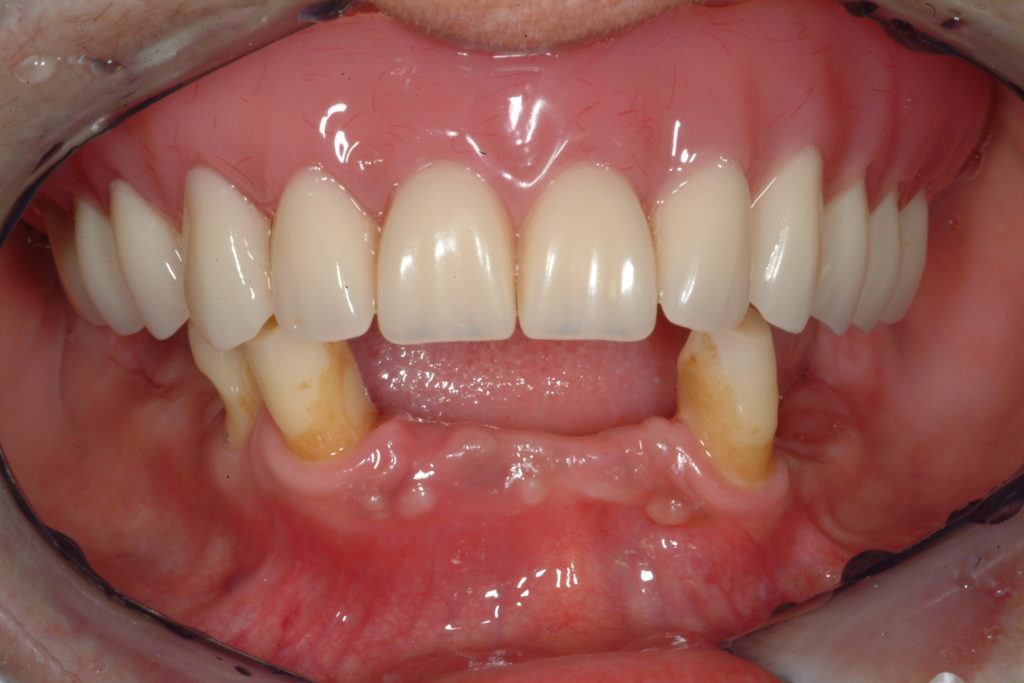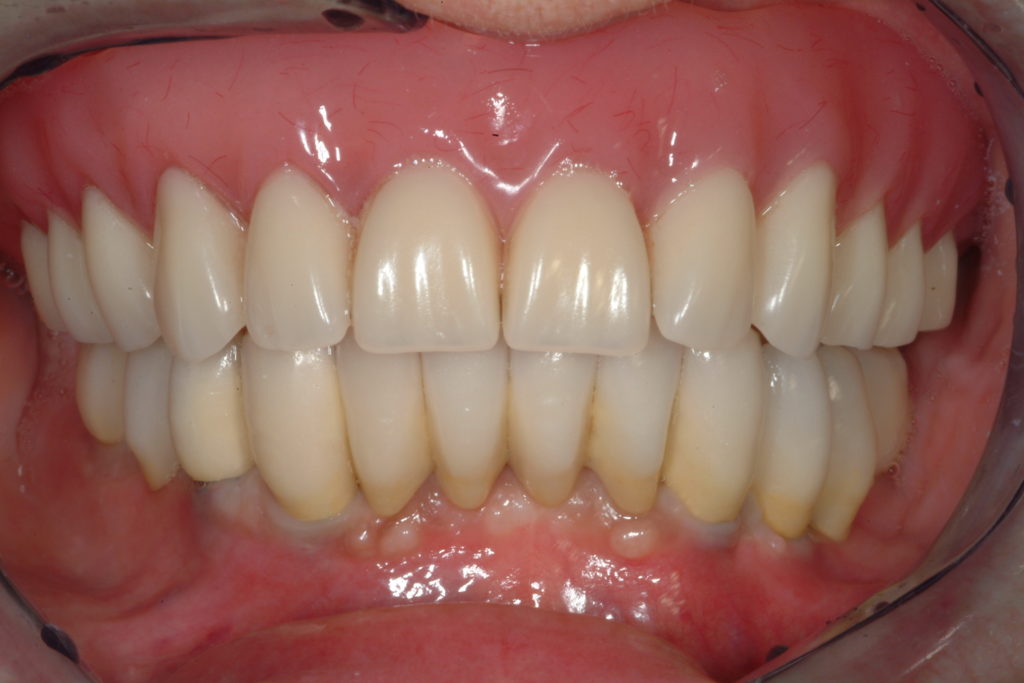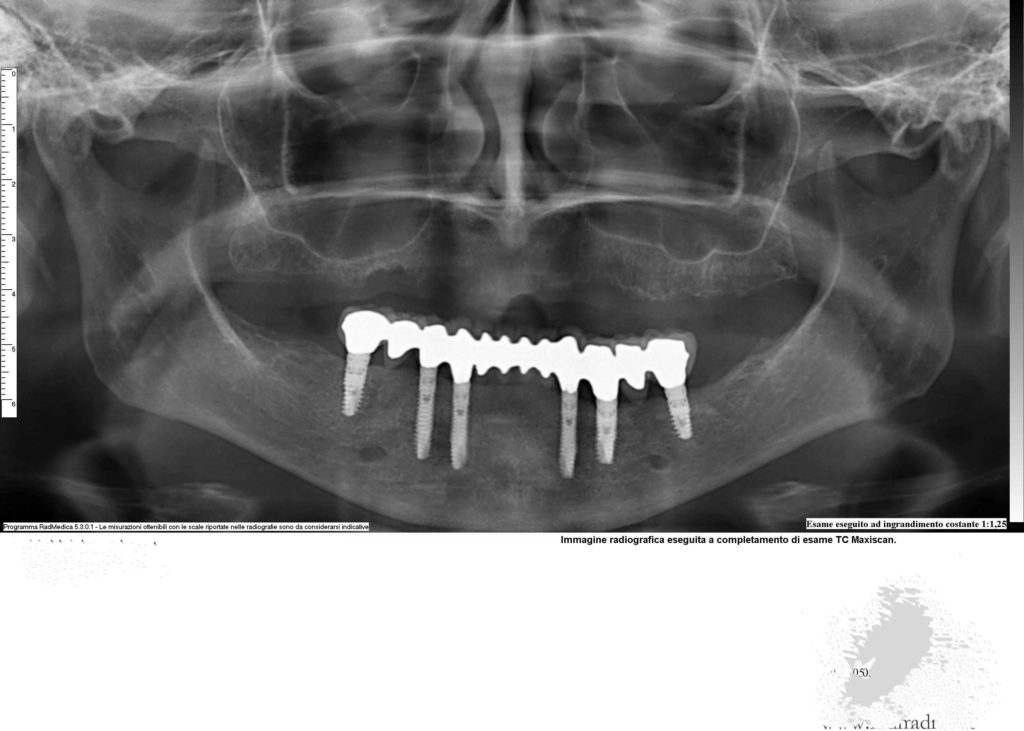Oral Implantology
What is it?
Oral implantology is the branch of dentistry that specializes in replacing missing teeth using an artificial root, secured in the bone to hold single teeth, groups of teeth or to act as a support for a complete prosthesis (dentures).
Dental implants provide up to date and efficient results and have a number of advantages compared with traditional methods used in dentistry. When one or more teeth are missing, a bridge positioned on implants guarantees exceptional solutions. In the past, when a tooth was lost, the healthy, adjacent tooth/teeth had to be filed down in order to carry a bridge or a mobile prosthesis. These days we can insert an implant and on the same day position a new tooth, where necessary and feasible. In more complex cases between 4 and 8 implants per dental arch can be inserted and patients can have their new teeth within 24 hours.
As dental implants lock perfectly into the mandibular and jaw bones, they offer a solid base on which to firmly position new teeth. One or more teeth can be replaced, making it possible for people who wear dentures to go back to enjoying a fixed dentition or a much more stable and comfortable prosthesis. They can have their smile back, rediscover the pleasures of eating and gain the renewed confidence of an agreeable mouth, benefits which otherwise could be lost forever.
One or more teeth may be lost following an accident or due to chronic periodontitis (otherwise called pyorrhea) or for hereditary reasons. It may also be necessary to extract a tooth owing to decay. The ideal solution for a missing tooth or more is dental implants.
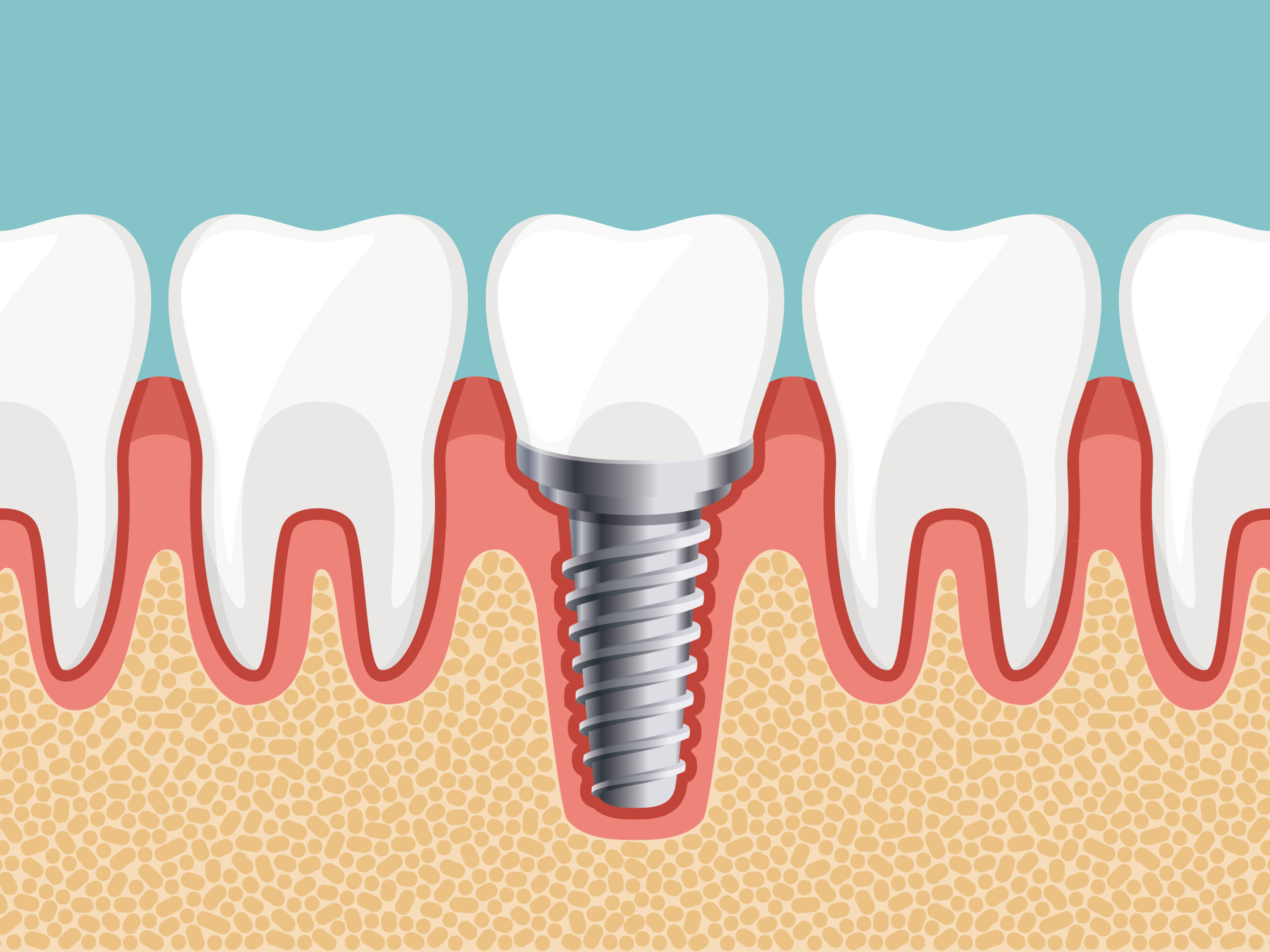
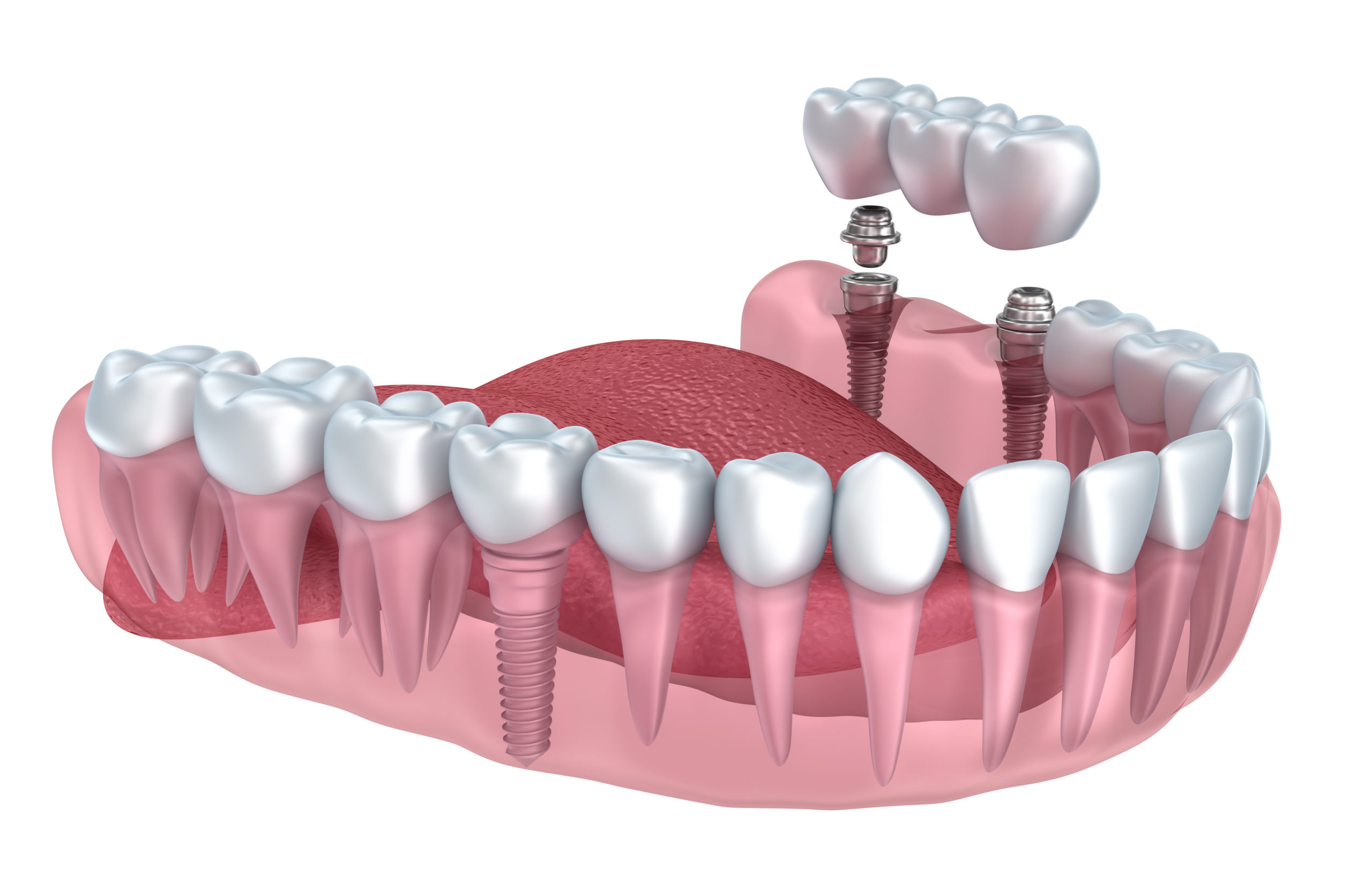
Why have a dental implant?
Our parents and grandparents and all previous generations were resigned to the fact that a lost tooth couldn’t be replaced: in modern times, in the 20th century, new technologies and increased know-how enabled dentists to develop techniques such as bridges as well as removable prostheses and full dentures, depending on how many teeth needed replacing. It was often necessary, however, to position these substitutes on remaining teeth that had to be filed down and unavoidably ruined.
Dental implants, with the affirmation of modern osseointegration implantology, make it possible for today’s dentists to give missing teeth back to patients, without touching the remaining healthy teeth. This is done in a very natural way: a new titanium root is implanted, titanium being a completely allergen-free metal which has the unique property of fusing directly to the bone. The bone cells attach themselves directly to the titanium surface, essentially locking the implant into the jawbone. The replacement tooth or teeth are then constructed by specialized dental technicians to match the natural enamel colour of each patient, offering a completely natural appearance and a whole new smile.
Modern implantology allows us to replace a single missing tooth, several missing teeth or a full arch: all teeth in the upper or lower jaw or both.
If missing teeth are not replaced, a lowering of the gum and supporting bone takes place, followed by the “caving in” of the face, leading to premature ageing.
The loss of a tooth provokes a series of physical, functional and esthetic changes. The first, most obvious, consequence is the gap in a person’s smile. Secondly, considerable chewing difficulties are encountered along with the inability to enjoy a normal diet.
The loss of one or more teeth is followed by two serious results: the displacement or inclination of the remaining teeth and bone loss and re-absorption, in terms of both height and width. Chewing usually keeps the jawbone strong, the face tonic and younger looking. Thus, the importance of keeping teeth healthy.
The replacement of missing teeth using implants offers a permanent solution to both problems.
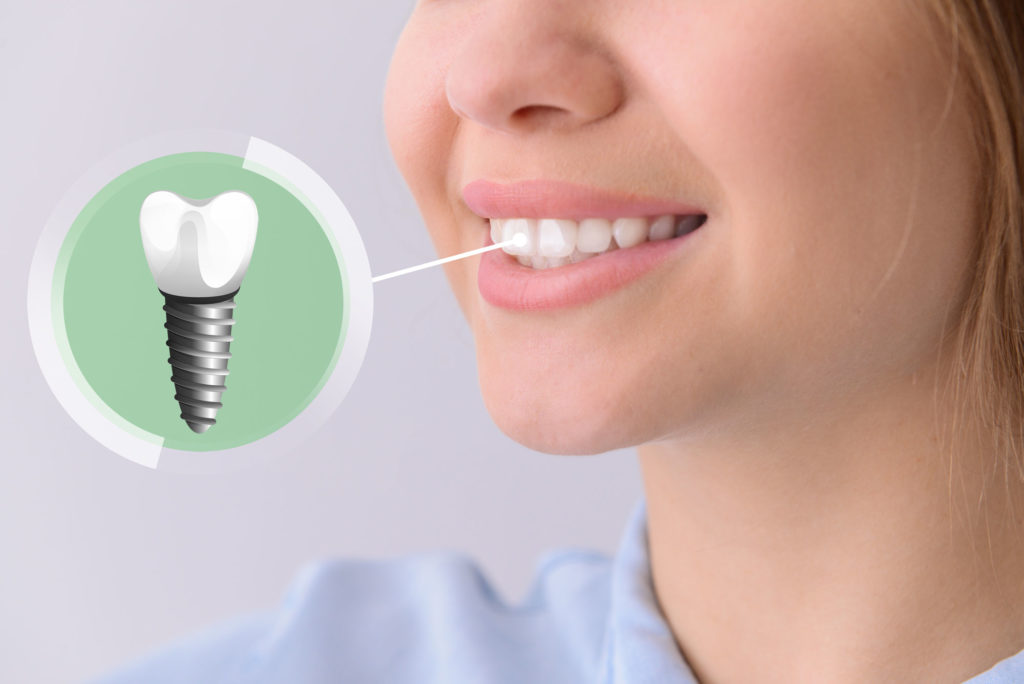
Traditional techniques to replace missing teeth
Conventional treatments are still successfully used in cases where it is not possible to insert implants: crowns on bridges, removable prostheses or traditional dentures.
Although representing valid solutions for solving chewing difficulties and enhancing aesthetics, they cannot prevent bone re-absorption, the bone no longer functioning as previously, being less subject to chewing pressure. Moreover, crowns and bridges need the sacrifice of healthy teeth, partially filed down, to rest on them. This involves the risk of fastidious endodontic treatment (devitalizing) and of future decay caused by weakening. If, subsequently, such “pillars” fail and have to be extracted, neighbouring teeth will have to be the new supports, with the result of damaging more healthy teeth and provoking further bone re-absorption.
Dental implants can avoid all this. Healthy teeth remain untouched, the bone containing the implant is kept tonic and strong through chewing. This is why most dental health structures today define dental implants as being the best therapeutic option to replace missing teeth.
The advantages of dental implants
- Dental Implants enable you to easily eat and savour your favourite foods.
- They are the most natural way to prevent gum and bone deterioration following the loss of natural teeth. When one or more teeth are missing, the surrounding gum and bone shrink, causing a biological imbalance which alters chewing, the stability of the remaining teeth and, if several teeth have been lost, also the shape of the face, jeopardizing attractiveness.
- Many social activities involve smiling, the pleasure of eating and physical well-being associated with healthy eating.
- Implants are easier to clean than bridges.
- For the above reasons, dental implants are an investment in your health.
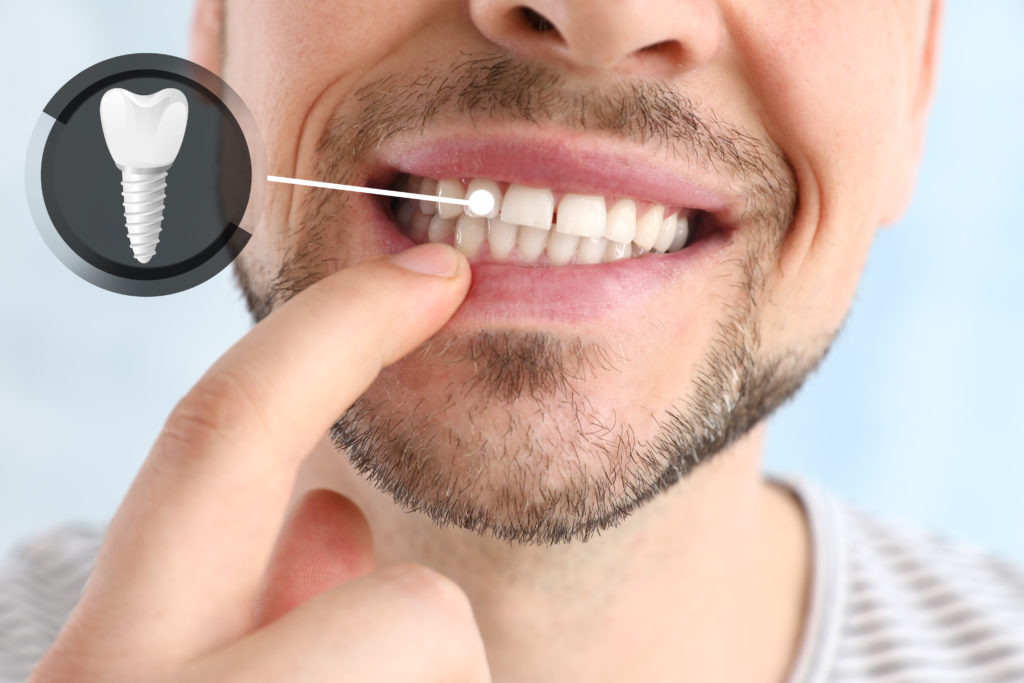
A solid base
Modern implants are the result of sophisticated medical research and the most up-to-date bioengineering that have established the effectiveness of osseous integration. Similar to vital organ transplants such as the heart or as with bone replacements, (e.g. the hip), the medical world has applied this extensive know-how to dentistry, bringing it the same high levels.
Implants are available in various designs, shape and sizes that adapt to all personal and therapeutic requirements. The most used is the titanium pillar. Totally biocompatible, it does not provoke rejection, fusing comfortably with the mandibular and jaw bones. A titanium implant abutment is then screwed onto the pillar and topped with a ceramic tooth, made-to-measure by specialized dental technicians. When a new ceramic tooth is completed and positioned on the implant, it completely blends in with the adjacent natural teeth.
An implant can be used to replace any missing tooth, provided that bone and gum structure are adequate. Should this not be the case, a number of options are available in order to regenerate both gums and bone.
Osteo Integration
In 1969, in Sweden, Professor Per-Ingvar Brånemark and his colleagues proved the scientific value of titanium osteo-integration. This consists in a true connection between human or animal bone and titanium.
Since 1969 millions of implants in titanium have been positioned worldwide and in this way millions of people have received a third dentition, following milk teeth and adult teeth. Dental implants, the third dentition, are still performing efficiently in the smiles of these millions of people.

Types of implants
New teeth in just one day
In many cases, where the bone structure is appropriate and assures direct stability to the implants, a provisional tooth can be positioned the very same day that the implant is performed.
This operation is termed immediate load implant.
What is more, in many cases, when an irreparable tooth is extracted, an implant can be immediately inserted, in the same sitting, without having to wait for the gum to heal and, therefore, without having to perform a second operation at a later stage, requiring a second anesthetic. This procedure is called fresh extraction implant.
In many fresh extraction cases, it is also possible to carry out an immediate load implant, when there are important esthetic requirements to consider, for example with front teeth.
Dental implants provide a certain and solid basic structure. An implant can be used to replace any missing tooth, provided that gum and bone structure are adequate. Should this not be the case, a number of options are available that enable both gum and bone regeneration.
Single implants
Immediate Loading: inserting the implant and tooth in the same session
As soon as the implant is inserted, the specialist assesses its primary stability and decides whether it is possible to already screw a temporary dental crown onto the implant in the same session.
The evaluation of the force with which the implant has entered the bone is expressed in newtons per cm2 and is generated by electronic measuring instruments.
Clinical case
Immediate post-extraction implant
In many cases, when an irrecoverable tooth is extracted, an implant can be immediately inserted, in the same session, without having to wait for the gum to heal and, therefore, avoiding additional surgery and anesthetic at a later date. This procedure is called Immediate post-extraction implant.
In various cases of post-extraction implants, immediate loading can also be carried out, when there are important aesthetic requirements, for example an incisor. the specialist will safely evaluate this possibility.
After the right amount of healing and stabilization time, the temporary crown is replaced with a more precise abutment and dental crown built by our laboratory, specialized in implant-prosthetics. These are customized and made in a way to be indistinguishable from the other natural teeth. The result is that the tooth has been replaced naturally, without damaging the neighbouring teeth and preventing bone resorption.
Multiple dental implants
The rules are the same as for single implants with the opportunities being immediate loading, post-extraction implants or immediate loading post-extraction implants.
Even in the case of multiple implants, patients can get a new, titanium root and even the tooth itself on the same day. In a single session we can replace the missing tooth with the implant and insert a temporary crown.
After a period of stabilization of the implant and healing of the gum, varying between 3 and 6 months, the final porcelain bridge is cemented or screwed. Comfortable chewing is recuperated, and patients can smile naturally.
The teeth are thus replaced without touching or damaging the adjacent teeth and without having to insert unnatural and uncomfortable removable prostheses. Furthermore, the thickness of the bone and the integrity of the facial tissue profile are maintained.
Fixed prostheses on implants
They are dental crowns usually made of ceramic or zirconium or composite. They are cemented or screwed onto implants.
The patient will be able to keep her/his new teeth clean with the usual home hygiene techniques. These new teeth are as immobile as natural teeth.
If necessary, the dentist can unscrew or de-cement them.
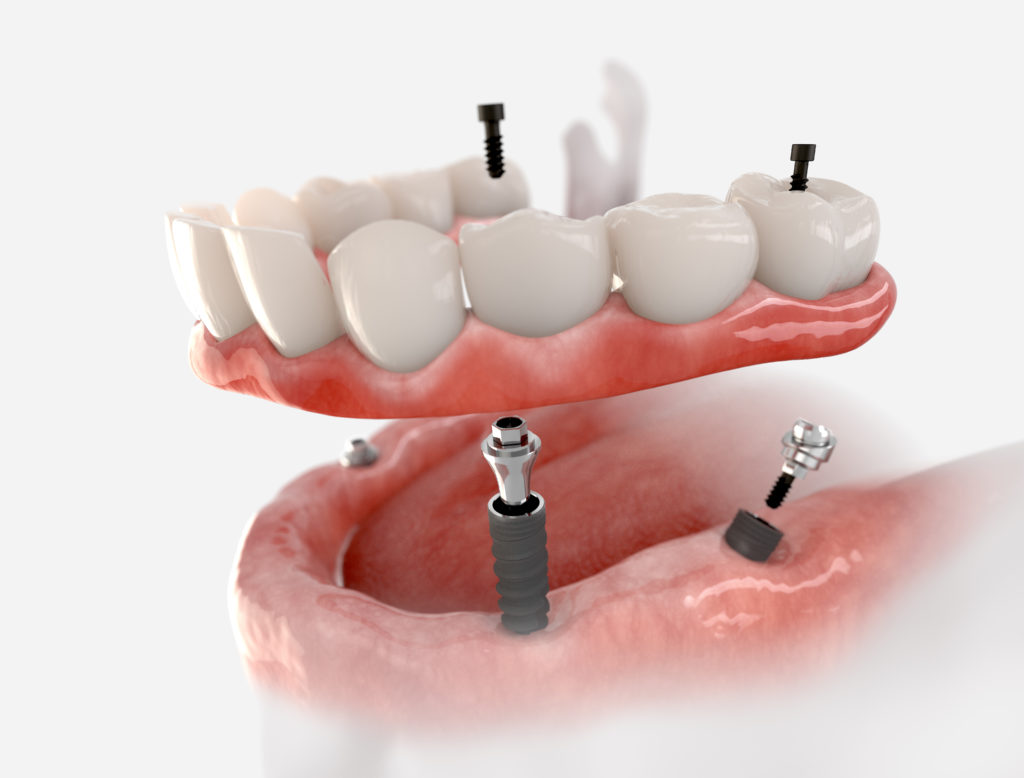
Mobile dentures on implants
In the case of a completely toothless (edentulous) patient, a removable prosthesis, the so-called dentures, can be used. Classic dentures have a support on the gum and therefore little stability.
To improve the stability of the dentures, we can use two to six implants. The dentures will be able to rest on the implants through Teflon or metal attachments and obtain considerable stability during chewing.
By pulling lightly, the patient can easily remove the dentures and brush them at the end of each meal. In the same way, she/he will be able to clean the implants that are non-other than the pillars of the dentures.
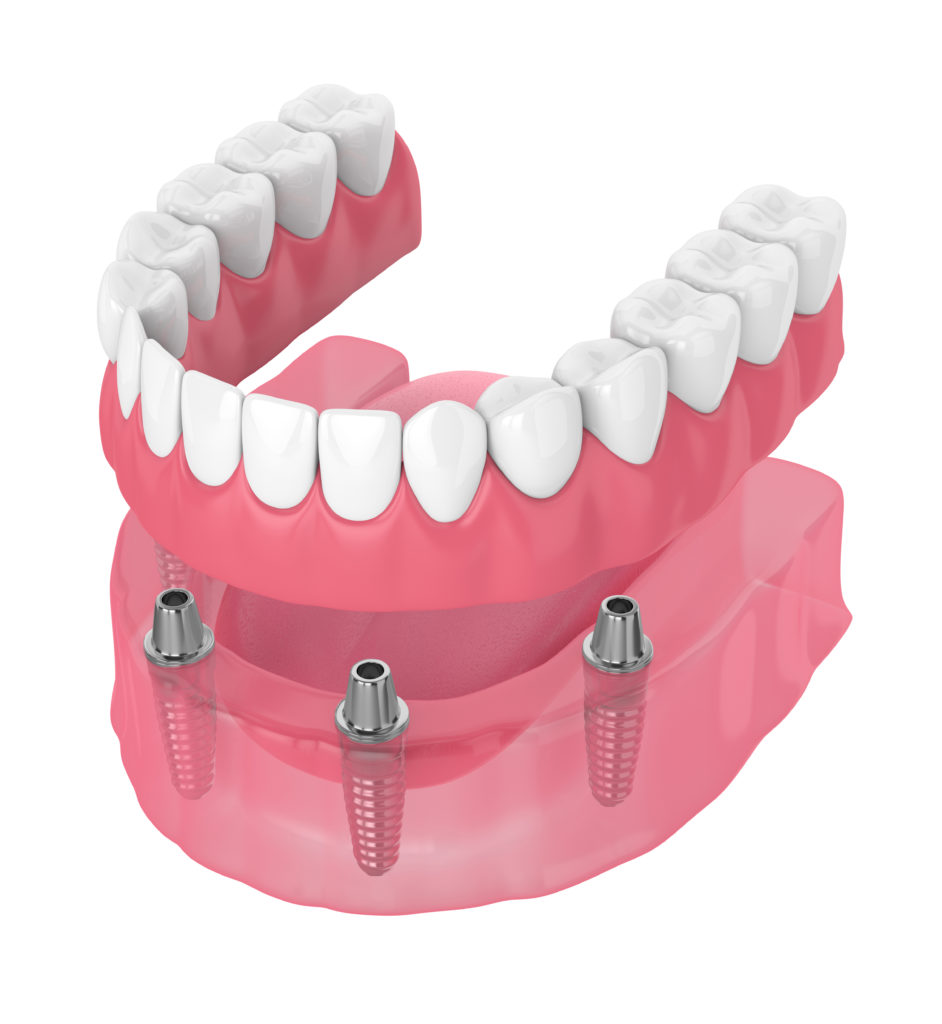
Clinical cases
F.A.Q. – Frequently Asked Questions
Is it possible to be allergic to dental implants?
Dental implants have been around for over 50 years, and during this long period, no allergies to titanium implants have ever been found. Titanium, in fact, has no allergenic components and behaves completely neutrally in the body.
Is general anesthesia required for implant placement?
No. Local anesthesia is sufficient: the perception of pain is completely eliminated.
What exactly is meant by ‘immediate loading’?
We mean the installation of the new tooth in the same session where the implant was inserted. The implantologist decides this on the basis of the stability of the implant that has just been inserted: the value of this stability is indicated by the appropriate electronic instruments.
What material can be used for crowns?
Most bridges and crowns are made of a metal alloy or ceramic-coated gold alloy substructure of the color corresponding to the natural tooth. An alternative of higher aesthetic and functional value is represented by ceramic on zirconium oxide, which, due to its high resistance, is particularly suitable for implant-prosthetic reconstructions. It is suitable for both single crowns and extended bridges and reflects light in the same way as natural tooth enamel. The prosthesis is therefore practically identical to the natural teeth.
Do dental implants make the metal detector go off, for example at airport checks?
No, don’t worry. Dental implants are non-magnetic and are also too small to be detected by metal detectors.
How much will it cost me in all?
Costs vary depending on the extent of treatment and the number of implants. The detailed estimate that your dentist will give you before starting your treatment will provide you with the exact amount of costs based on your individual situation.
Will I feel pain after the surgery?
In the first few days after surgery, your gum will probably be sensitive, but it will no longer bleed. Your cheeks may be swollen for a short time and slightly uncomfortable. However, many patients do not even need painkillers the next day, and immediately return to a normal life.
How long does a dental implant last?
After the healing phase, a quality implant placed correctly is more resistant to many factors than natural tooth roots. A titanium implant suitably loaded from a prosthetic point of view does not rupture, and cannot decay. Subsequently, regular dental hygiene preserves the health of the gum and the implant site. In short, with proper care and regular check-ups, implants can last as long as natural teeth.
How many dentist appointments are required for my new implant teeth?
It depends on the extent and type of treatment. For the consultation, a session is usually sufficient during which the dentist can answer your questions. In the next session, the preliminary diagnostic tests and treatment plan will be performed. The new “roots” can usually be inserted into the jawbone a short time later, in a single session. At this stage, the dentist makes a small incision in the gum at the point corresponding to the implant, inserts the implant and sutures the incision. One or two days after surgery, the wound is checked to see if it is healing. After about ten days, the stitches are removed. From then on, all you have to do is wait for the bone to regenerate during the so-called “healing phase”, which lasts an average of three months, stress-free and usually without further appointments with the dentist, except for periodic check-ups.
If I am diabetic, can I have an implant placed?
Yes. But your diabetes needs to be kept under strict pharmacological control. Poorly controlled or untreated diabetes can impair healing processes due to its effect on metabolism. If in doubt, your dentist will consult your doctor.
I need implants, but I would also like to have all my teeth whiter or more beautiful. What can the dentist do?
The dentist can often lighten dark teeth with a whitening. Aesthetically imperfect anterior teeth can be coated with thin ceramic or resin veneers. In this case, crowns on implants can be made directly lighter and therefore more similar to veneers. Talk to your dentist, who can offer a solution for almost any problem.
Is there a minimum age for dental implants?
By the time the implants are placed, bone growth should be finished; Generally, it is considered to be finished between the ages of 18 and 21, but it varies. Females, for example, usually complete growth earlier than males. In doubtful cases, the bone situation can be easily determined with an X-ray of the carpus (hand bone).
Are there any contraindications to implant placement at an older age?
It’s never too late to improve your quality of life with implants. The treatment has so little risk that implants can be placed even in patients in their 70s, 80s and even 90s. There is no upper age limit. If you are able to have regular routine dentist surgeries and are in good health, you can also have implants inserted.
Is there a possibility of drug interactions?
With certain medications, this is possible. Cortisone, for example, can alter the body’s metabolic and immune systems, and thus cause problems in the healing phase.
Anticoagulant drugs, on the other hand, can cause serious bleeding during implant placement surgery. The latest generation of bisphosphonate-based drugs for the treatment of osteoporosis or bone neoplasms, then, involve an absolute contraindication to any surgical practice, including implantology. So, in case you take medication regularly, you should definitely inform your dentist about it.
Are dental implants advisable for smokers?
Smoking is not good for anything! The long-term success of dental implants can also be endangered by smoking, but this is not a contraindication. Smoking patients who have dental implants will need to keep their mouth, teeth and therefore implants clean as well as other non-smoking patients.
How should I treat my teeth on implants?
Prosthetic teeth on implants not only look like natural teeth, but can also be cleaned just as easily with a toothbrush, even an electric one, and toothpaste. When cleaning implants, the spaces between the teeth and the transition areas with the gums are particularly important. This is where bacteria quickly settle and can attack the gum and over time also the bone around the implant. This can be avoided by flossing or using small interdental brushes. Your dentist’s hygienist will be able to teach you how to use the instruments in the right way and will be able to take care of the professional hygiene of your teeth at regular intervals of 3-6-12 months, according to your ability to maintain daily hygiene and the advice of your dentist. It is therefore advisable that you attend regular check-up appointments with your dentist. It’s worth it.
When will I be able to go back to work?
You will usually be able to resume your daily activities as early as the next day. In the case of many implants or multiple extractions, you may need a few days of rest.
Can I bite and eat normally with implant prostheses?
Whether it’s a crown, a bridge or a full denture: With your new teeth you can eat, bite, talk and smile just as you did with your natural teeth. The prosthetic reconstruction is so stable on the implants that it gives you a feeling of absolute security.
What happens if I lose a natural tooth that is integrated into a bridge as a abutment?
If a tooth has to be extracted due to, for example, inflammation of the root, it can usually be replaced without difficulty with an additional implant. The support and possibly also the prosthesis are then modified accordingly.

